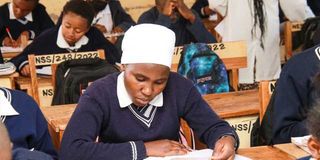Reform education to have students actually learning

Students in class in Nyeri County. One thing that taxpayers and politicians agree on practically everywhere is that more money should be spent on children’s education.
One thing that taxpayers and politicians agree on practically everywhere is that more money should be spent on children’s education.
This seems like a no-brainer: Better education means children get a better start in life. But take care: Many popular educational investments deliver little or no learning, while we rarely hear about the most effective investments.
In the early 2000s, “One Laptop Per Child” was touted as a revolutionary game changer in education: “the laptop that saved the world”. But when the policy was finally evaluated, it had “no impacts on academic achievement or cognitive skills” whatsoever.
Indeed, it is easy to spend a fortune on well-intentioned initiatives that deliver little or no learning. India increased spending per primary school pupil by 71 per cent over just seven years but reading and maths test scores declined sharply.
Indonesia doubled education spending to pay teachers more and achieve the lowest class sizes in the world, yet a large, randomised controlled study showed that this had absolutely no impact on student learning.
Wrong approaches
The approaches taken most often by governments—paying teachers more, reducing class sizes and building schools—are costly and do little or nothing for learning. Yet they are often the go-to solutions for pledges like the education promises in the Sustainable Development Goals (SDGs). The 2030 target is impossibly ambitious. On current best trends, we’ll be a quarter-century late.
The world is failing across all the 169 SDG promises. We are at halftime for the promises but nowhere near halfway. It is time to identify and prioritise the policies. The problem is urgent for the poorer half of the world. Children are mostly in school but learn little. Of nearly half a billion primary school pupil, almost 80 per cent are not learning minimal reading and maths skills. Instead of unrealistically promising hundreds of billions of dollars for little or no extra learning, opt for smart and effective solutions.
Our new peer-reviewed research shows that two affordable policies can make an amazing difference.
The first proven approach helps pupils to learn more effectively. School classes put all nine-year-olds in one grade, 10-year-olds in another, et cetera. But many of the children in each are either far behind and ready to give up or far ahead and bored.
An effective way is using tablets to teach students. With the educational software, the tablet quickly assesses the level of the student and starts teaching at that level. For one hour a day, that student is taught at his or her right level, boosting learning. After just one year, testing shows that the student has learned what would normally have taken three full years.
The second is “structured pedagogy”, helping teachers to teach better. A trial in Kenya was so successful that it was adopted for the whole country. With a full year of semi-structured teaching plans, coaching and encouraging text messages, the project helps teachers provide more engaging and useful instruction. Studies show this delivers learning equivalent to almost one extra year of schooling.
Enacting these two policies across the poor half of the world would cost less than $10 billion. But it would deliver long-term economic productivity growth worth more than $600 billion. Every dollar delivers an outstanding $65 of social benefits. We should prioritise spending $10 billion on proven, effective approaches and deliver on the most important education pledge: Radically improved learning.
Dr Lomborg, PhD, is the president of the Copenhagen Consensus and Visiting Fellow at Stanford University’s Hoover Institution. His brand new book "Best Things First" was released this week. [email protected] @BjornLomborg www.lomborg.com.





